There’s a remote chance that inexplicable light variations in a star in the Northern Cross may be caused by the works of an alien civilization.
1,480 light years from Earth twinkles one of the greatest mysteries of recent times. There in the constellation Cygnus the Swan, you’ll find a dim, ordinary-looking point of light with an innocent sounding name — Tabby’s Star. Named for Louisiana State University astronomer Tabetha Boyajian, who was the lead author on a paper about its behavior, this star has so confounded astronomers with its unpredictable ups and downs in its brightness, they’ve gone to war on the object, drilling down on it with everything from the Hubble to the monster 393.7-inch (10-meter) Keck Telescope in Hawaii.
Tabby’s Star was uncovered by the Kepler Space Telescope during its examination of of more than 150,000 stars in the Milky Way. Kepler sought out stars accompanied by planets. By recording tiny, repeating fading of the star’s light as a planet passes in front a star, astronomers could determine the planet’s size, orbit and much more. All told, Kepler nabbed more than 2,300 new planets orbiting a host of stars in the constellations Lyra and Cygnus.
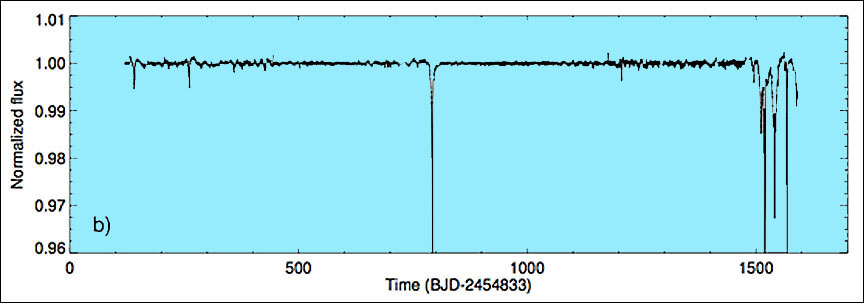
Among the stars Kepler viewed in its survey was one KIC 8462852 (Tabby’s Star). Unlike the others, its light dimmed in a completely unpredictable way. Things in orbit produce repeatable patterns, so astronomers began searching for alternative explanations. Might the star be variable? Lots of stars undergo physical changes such as pulsations or even explosions that cause them to vary in brightness. Nope. Based on its type, a stable star similar to the sun, and the fact that most of the time, it remains shining with a steady light, it didn’t fit the pattern.
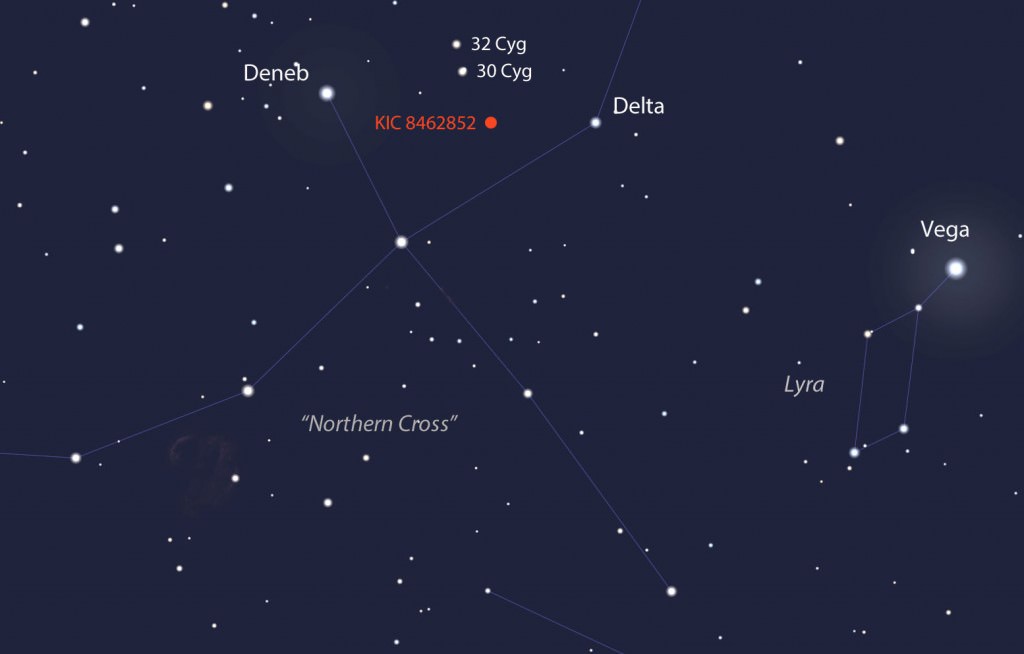
The star dims by as much as 22% for days at a time at irregular intervals. Stars fade and re-brighten, but not in the way this star does according to astronomers. Researchers ruled out many possibilities including instrumental errors, starspots (like sunspots but on other stars), dust rings seen around young, evolving stars (this is an older star) and pulsations that can cloak it with light-absorbing dust clouds. Dust clouds don’t work because they’d warm up in the star’s light and radiate heat that we could detect with infrared telescopes. We see no excess of glowing dust, ruling that possibility out, too.
Casting about for potential answers, Boyajian and team hit on the hypothesis that an enormous cloud of comets might be behind the light fluctuations. Imagine these comets, fragile creatures that they are, breaking up into fragments that cascade into smaller pieces over time, creating a host of irregular and chaotic variations in Tabby’s light.
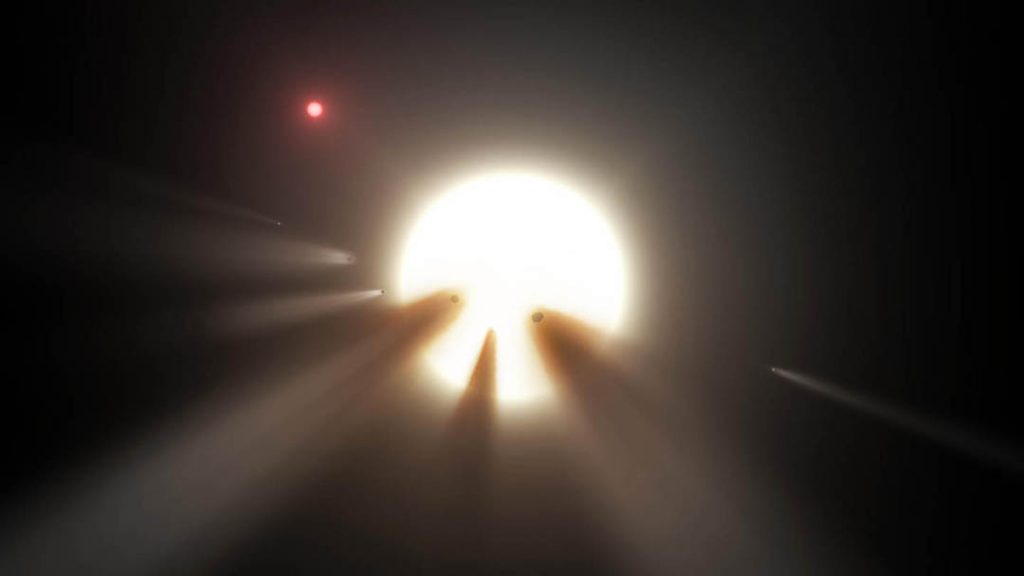
While that may be a reach, there’s even a stranger possibility. Jason Wright, an assistant professor of astronomy at Penn State, would like us to consider an alien civilization as the cause. Although the possibility is a remote one, he asks us to consider that an alien civilization may be building a megastructure known as a Dyson Sphere around its home star. A Dyson Sphere is a hypothetical sphere constructed around a star. Built of enormous solar panels, it would capture the star’s energy and convert it into electricity to power a technological civilization.
Now imagine if you will, thousands of huge panels in various stages of construction and position orbiting Tabby’s Star, and you just might have an explanation for its mysterious ups and downs. Far-fetched? Of course. But there may be a way to prove it.
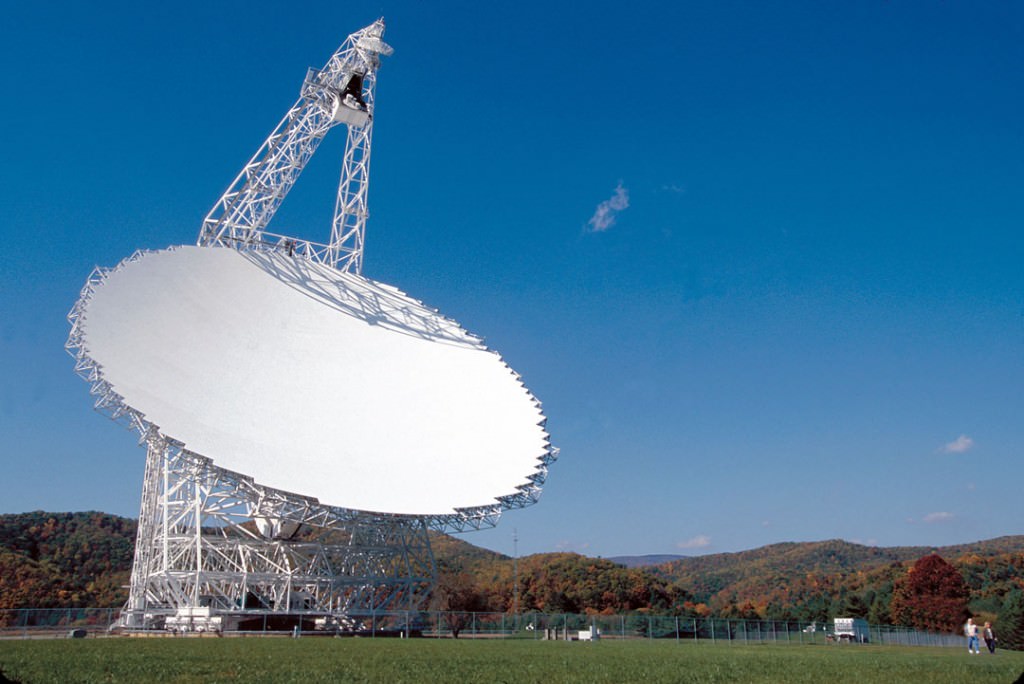
A technologically advanced civilization would presumably need to communicate over long distances just like humans do. We use radio and TV, both of which transmit at very specific and narrow frequencies. Every time you go up and down the radio dial, each station you hear is beaming powerful radio waves at a specific frequency or vibration rate. Natural processes are more casual with a broader spread of frequencies. If we could detect a powerful signal at a specific frequency coming from Tabby’s Star, it could potentially be an indication of an alien species at work transmitting their own version of Dancing with the Stars.
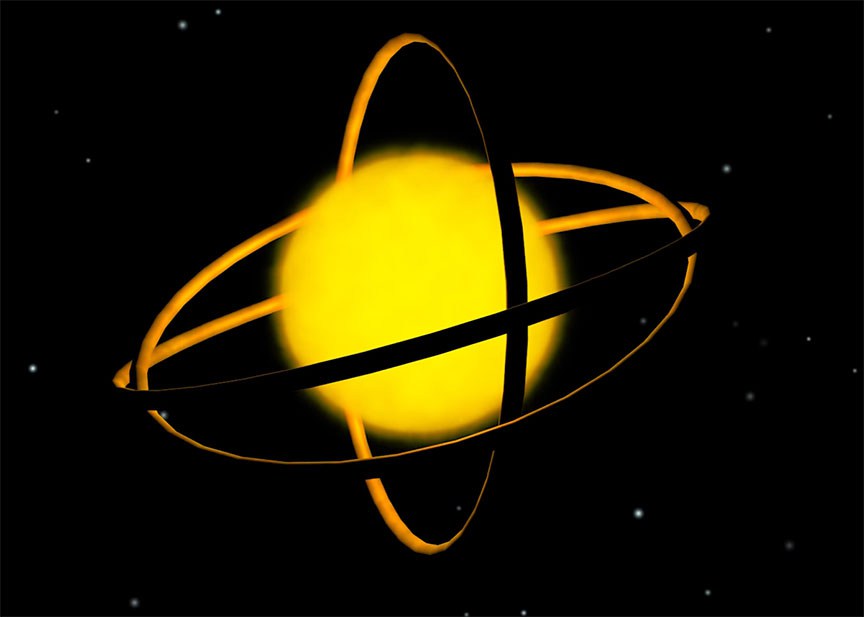
So how do we do this? How can even know what frequencies they’ll be using to transmit? Well, you take the Green Bank Radio Telescope, the largest fully steerable radio telescope on the planet, and hook it up with a new SETI instrument that can look at an enormous swath of bandwidth simultaneously in billions of different radio channels. That’s exactly what happened Wednesday night (Oct. 26) as part of the Breakthrough Listen project, a $100 million initiative by Russian tycoon Yuri Milner to search for intelligent life in the universe.
University of California Berkeley astronomers devoted eight hours of scope time last night “listening” to Tabby’s Star for potential signs of an extraterrestrial civilization. They’ll spend two more nights in the coming two months at it and then analyze the data, a process that will take more than a month. Perhaps then we’ll finally get an answer. I hope it’s an alien one, but of course that’s a long shot. Stay tuned.
**** My new book, Night Sky with the Naked Eye, will be published on Nov. 8, but you can pre-order right now at these online stores. Just click an icon to go to the site of your choice – Amazon, Barnes & Noble or Indiebound. It’s currently available at the first two outlets for a very nice discount:

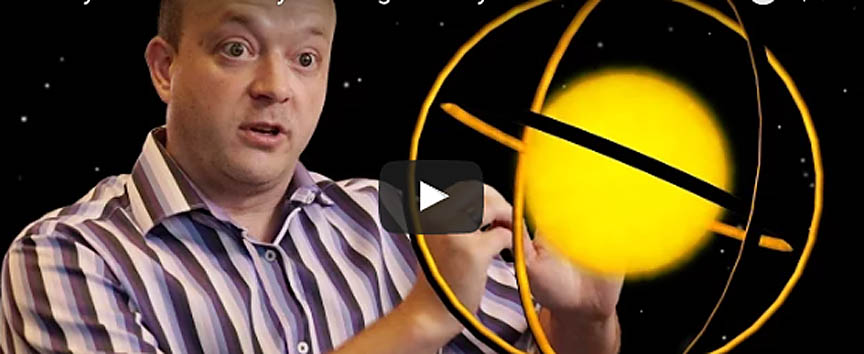



The problem with this thinking, and SETI in general, is that if a civilisation is capable of enveloping their star in some kind of structure. Don’t you think they communicate with something more advanced than radio waves?
Niolater – very good question.
I was in a dialog recently about this. I asked the group I was talking with, to tell me, ” .. over the ages, how many different ways have human come to communicate over short and long distances? ”
They apparently had never pondered this before. Here is a short list:
. Smoke Signals.
. Colored Flags.
. Colored Lights
. Drum Beats.
. Morse Code of Electrical – Lights.
. Radio – Television
. Telephones – Cell Phones
. Written Messages, via, letters, books, News Papers,
. Carrier birds.
Now we have Internet, with the strong use of WiFi and such.
… and the use of data compression / encrypted data.
We are also now using compressed laser beams and light frequencies to carry encrypted messages.
So I agree, what IF an alien race has learned of a seriously much more efficient means of communicating over the vast distances of space, by using one or more of the above or something totally different?
What if there is something like ” Sub-Space ” or ” Hyper-Space ” that makes sending / receiving messages a whole lot faster?
We are infants when it comes to this concept of communication when it comes to Space.
This is a pointless subject because, by definition, we don’t know how to look for signs of technology that are more advanced than our technology. All we can do is look for evidence of technology we DO possess and understand. The only alternative is to do nothing.
an alien goose chase ?
in space no one can hear you quack …
If we understand physics correctly, there is no way to avoid re radiating the intercepted light as IR. But it is possible to radiate waste heat in a direction that does not include our direction. A few months before the announcement of Tabby’s star, a group of us presented a thermal power satellite design that would not be seen in the IR if we were looking at it edge on to the local ecliptic.
http://spacejournal.ohio.edu/issue18/thermalpower.html
http://spacejournal.ohio.edu/issue18/sunflower.html
The sunshade around the edge of the radiator blocks IR from going out along the local ecliptic. If we are looking at alien megastructures of this kind, the first question is what are they doing with the energy? The star has faded around 14% over the last century. That’s an awful lot of energy. The second question is why have they not visited?
If the logic presented here:
https://web.archive.org/web/20121130232045/http://hplusmagazine.com/2012/04/12/transhumanism-and-the-human-expansion-into-space-a-conflict-with-physics/
is valid and the speed of light really is the limit, then it could be that their viewpoint we are billions of subjective years away from them. Of course we could be looking into a really big version of the James Webb telescope, that would not send any IR our directed either.
Our scientists can confirm possibilities of intelligent life in the distance star systems. But they still did not know whether any form of life exists / existed in the nearby Mars!
Nice article Bob, but… um…
“Tabby’s Star shines at magnitude +11.7 in the constellation Cygnus the Swan (Northern Cross) high in the southwestern sky at nightfall in late October. “
In the words of Akima (Drew Barrymore): “I’m never calling it that!” ^_^
I am wondering if what is being detected are non-spherical rotating bodies transiting between the Kepler telescope and the star in interstellar space (oort cloud objects possibly)?
That’s amazing news! I want to see photos of Tabby Star! I’ve started to study astronomy at the college and last weekend spent just watching videos of Milkey Way: http://solarstory.net/objects/milky-way#video-gallery It’s so stunning!
I just want know, when will be possible to watch a video of Tabby Star? In 10 years or maybe less?